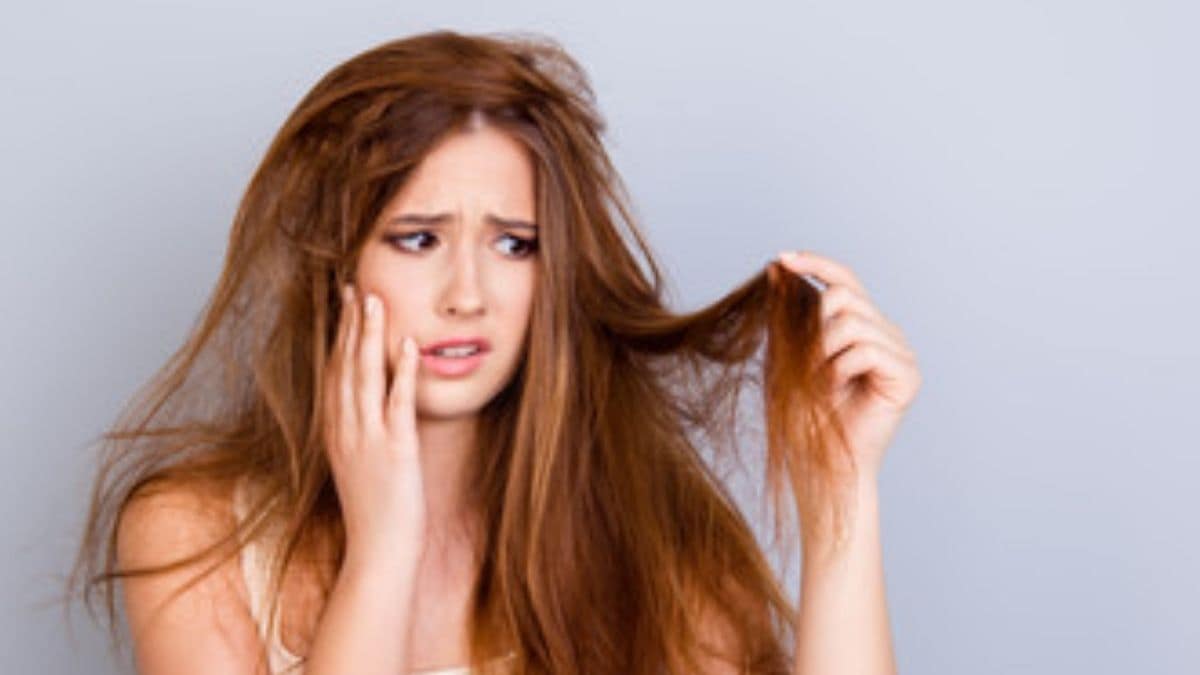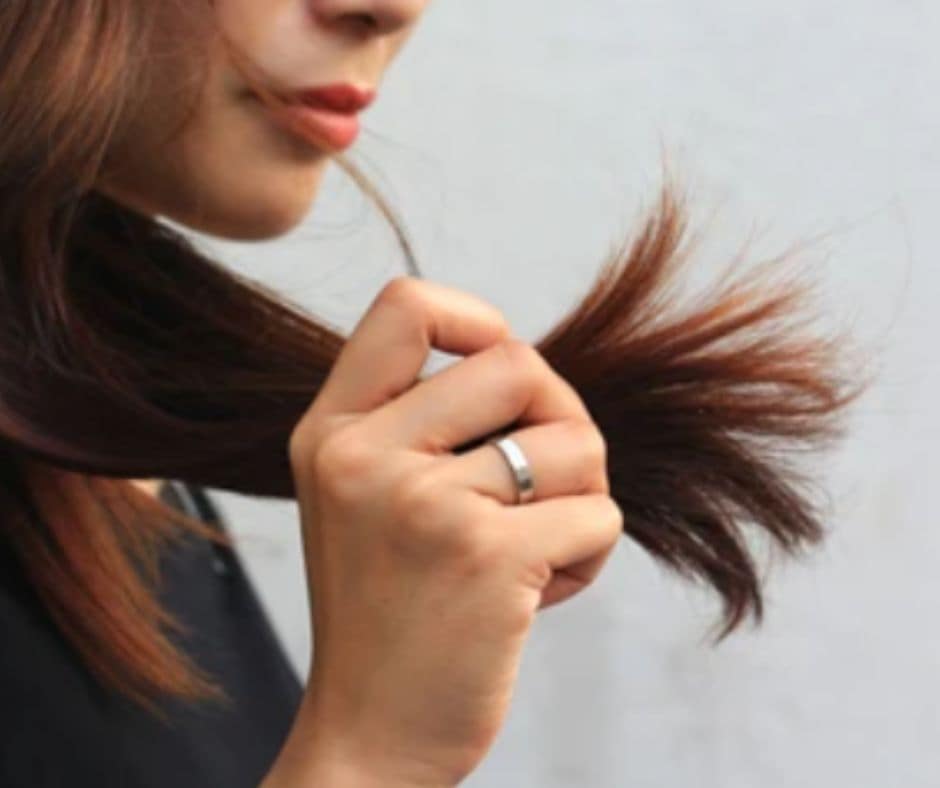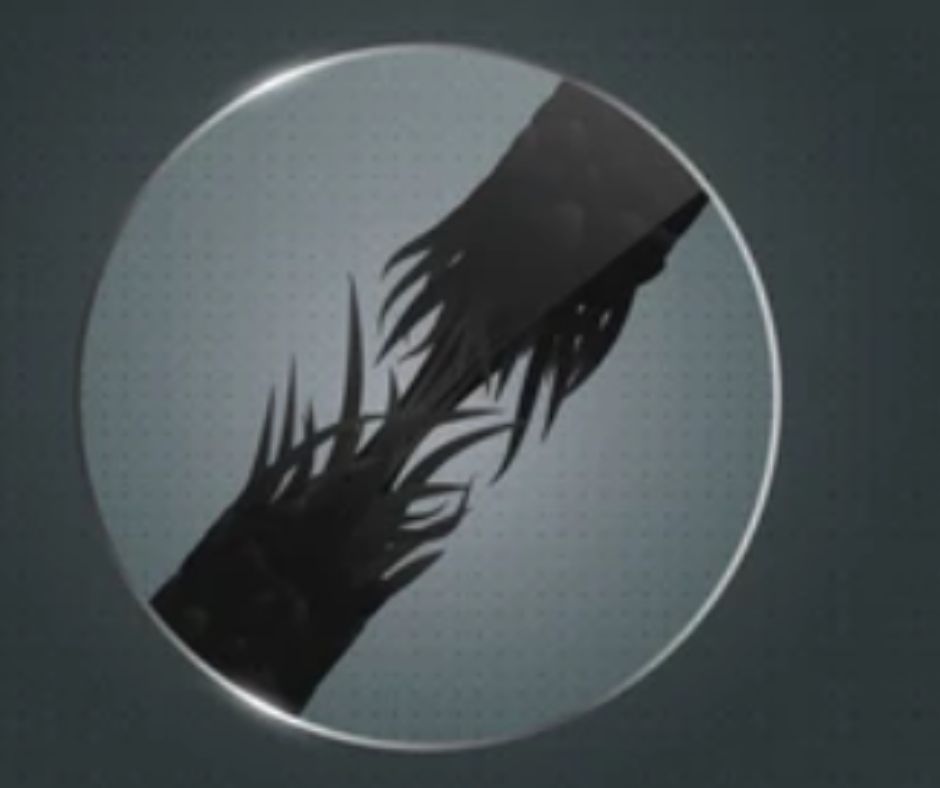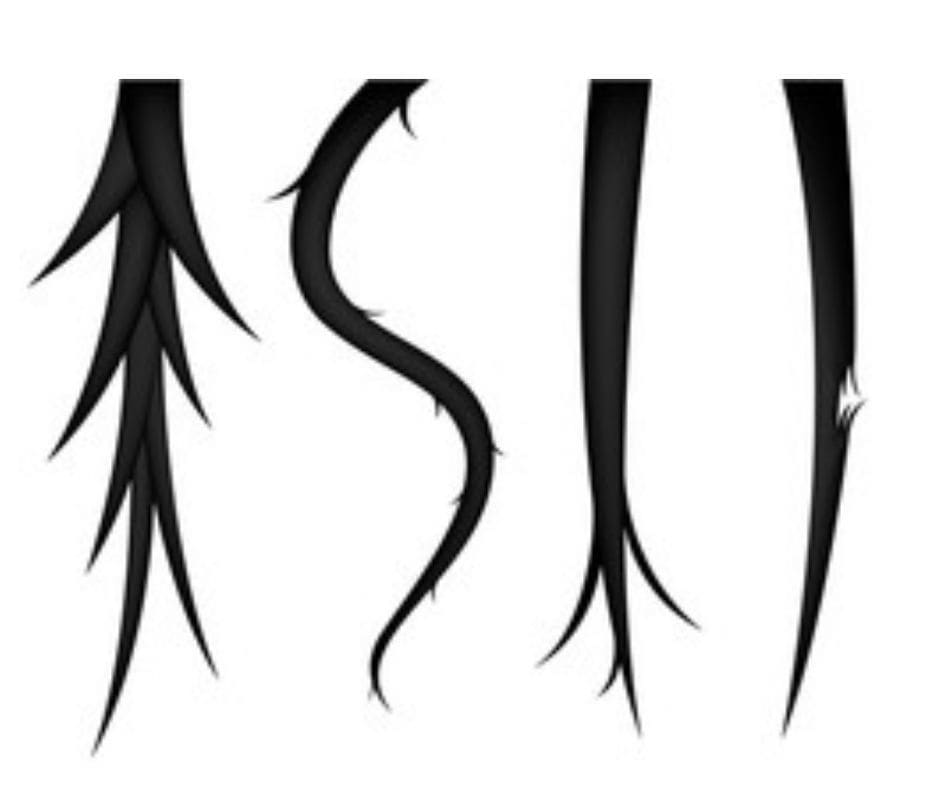How to tell if your hair is damaged [7 Tell-tale signs]

Damaged hair is the last thing any female would like to go through. Damaged hair may not feel like the end of the world, but how to tell if your hair is damaged is people would like to know. The fact is that knowing the indications of hair damage now, before it occurs, is preferable to waiting for it to occur and then attempting to deal with it
Telltale sign or signs of damage hair
Both Ladies and Men today are concern about their hair health. So how to tell if your hair is damaged when one feels their hair strands are unhealthy or they are just having a bad hair day? Here are 7 signs of hair damage:
Split ends

The ends of your hair, also known as the tips of your hair, are the most visible part of your hair. They are the longest part of your hair and are the most visible when your hair is styled.
They are the most sensitive part of your hair such as hair cuticle and can feel the most damage. When your ends are damaged and dried out, they can split, break, and fall off. This is one way on how to tell if your hair is damaged.
Hair dry, dull hair

I haven’t been able to go a full week without my hair being dry, dull, and tangled. These are the signs of hair damage. Lifeless hair are signs of lack of luscious hair due to lack of protein.
These variables, including the incorrect color, products, vitamin shortage, stress, poor hot tools, and bad hormone pills, can cause lifeless or dull hair.
Hair Breakage

Hair breakage is the most common concern people have when it comes to their hair. It’s a natural process that happens when hair is stretched or pulled out of its normal shape.
This can happen when hair undergoes chemical treatment that causes chemical damage. Also using excessive heat without any heat protectant when drying hair. Hair breakage is also a big indicator of how to tell if your hair is damaged.
Less Bounce
Bounce and compression in the hair is a normal and healthy part of the process of growing hair. If there is less bounce it could also be a sign of unhealthy hair
Hair Thinning
Some people can come across hair thinning experience hair thinning maybe due to disease, exposure to harmful chemical products or products. Thinning hair is a sign of damage of your hair follicles.
sign of dryness
Dryness in hair often indicates a lack of moisture, moisture from perspiration or something else. This can also be a sign of a hormonal imbalance, such as due to lack of hormones or excess hormones.
More Tangles
Tangled hair could form by damaged hair follicles. The rough surface may cause hair to get for tangled.
Detangling problems might be caused by damaged hair, but they can also be caused by other reasons. For example, undamaged long and fine hair might be difficult to untangle simply because it is prone to knots and fairy knots. It’s easy to assume that dull, lifeless hair is damaged, but this is another situation where the appearance isn’t necessarily true. If you don’t take care of your hair, it might become dull and lifeless.
Your strands will be more delicate and fragile if you have damaged hair. However, dryness does not always imply that your hair is harmed. Because of their porosity, naturally curly and kinky hair is exceedingly dry, leaving it highly brittle and needing extra hydration.
How do you know if your hair is damaged or just dry?

When hair is damaged, it’s usually because the protein connections in the hair have been disrupted due to overuse of chemical hair treatments, causing the hair to become weaker and snap. Knowing how to tell if your hair is damaged is not enough. You need to know that it requires protein to replenish and repair these protein connections, allowing the hair to regain its strength and vitality.
Dry hair might lose moisture due to heat styling, climate fluctuations, or simply because your scalp generates less oil.
Searching for visible indications of damage in your hair is a smart place to start. Split ends and uneven hair length due to breaking are simple to see. A wonderful hairdresser tip is to take a single strand of wet hair off your head straight after your shower or bath to notice the difference between dry and damaged hair.
Pull the strand of hair at both ends gently to check how flexible it is. Your hair is healthy if it can extend by about a third of its original length before returning to its previous length. You have damage issues if there is no give at all. Your hair is in desperate need of some protein and tender loving care. If your hair expands but does not return to its usual size, it is dry and needs to be quenched as soon as possible.
Why do People Suffer From Dry Hair?

Dry hair can be caused by many reasons, including the climate, hair care practices, and your physical health.
The following are some examples of environmental factors that might produce dry hair:
- Living in a hot and dry climate
- Having spent a lot of time in the sun or the wind
- Swimming in chlorinated or salty water regularly
Dry hair is caused by a variety of hair care techniques, including:
- Hair that is washed too frequently
- Using harsh shampoos, conditioners, or styling products on your hair
- Chemically treating or dying your hair
- Blow-drying your hair regularly
- Using curling irons, straighteners, or curlers that are powered by electricity
Dry hair can also be caused by an underlying health issue that impairs your hair’s ability to retain moisture. Here are several examples:
- Anorexia nervosa is an eating disorder that can result in malnutrition. In addition, it can lead to dry, brittle hair and more significant side effects.
- Hypothyroidism is a condition in which your thyroid glands generate insufficient thyroid hormones. One of the first signs of this disease is dry, brittle hair.
- Menkes syndrome is a rare hereditary disease in which the body’s cells can not absorb enough copper. Copper deficiency affects the health of your hair, leading it to become dry.
- Hypoparathyroidism occurs when the parathyroid gland in your neck produces insufficient parathyroid hormone, causing calcium levels in your blood to drop. Calcium is essential for the health of hair, bones, teeth, and other tissues.
What does severely damaged hair look like?
Damaged hair appears brittle and straw-like. Split ends and stray, unmanageable hairs originate from the hair shaft’s fragility and susceptibility to breaking. When touched, it will feel rigid and “crunch” with little movement. Any further heat style or treatments on damaged hair will simply make it appear worse and take longer to heal.
If you know how to tell if your hair is damaged, the greatest thing you can do is give it the rest it requires. This entails using a shampoo and conditioner designed with nutrients and substances to help revitalize the hair. When possible, avoid heat style and vigorous towel drying. Any additional demands placed on the hair while it is in this vulnerable stage might cause more harm.
Can damaged hair be repaired?

Many products on the market claim to cure and restore dry, damaged hair – conditioners, serums, shampoos, etc. Unfortunately, damaged hair cannot be repaired. Hair cannot mend since it is not a biological tissue with regenerative powers. There are no nerves, blood, or live cells in it.
Sure, you may use well-formulated, natural conditioners, oil treatments, and masks to temporarily enhance texture and conceal hair concerns, but that’s like applying cosmetics to alter the appearance of your skin: they’ll wash out soon, and you’ll be left with the underlying issue.
How can I repair my damaged hair fast?
Follow this advice to restore your hair if it’s already damaged:
- Turn Down the Heat on Your Tools
May the Lord bless your curling iron, flat iron, and blow dryer and keep them safe. They’re the wands that turn your unkempt or unmanageable locks into gorgeous waves and curls or enormous, blown-out glory. Unfortunately, heat damage—dryness, brittleness, and flyaways—comes with all that heat.
- Wet hair should be handled with caution
When your hair is damp, it is at its most susceptible. If your wet hair is fine, curly, or delicate, the risk of damage increases dramatically. So proceed with caution. Unless it’s a brush particularly intended for the job, never try to brush damp hair with a brush.
- Indulge in nourishing hair masks
Hair masks are a type of conditioning treatment. High concentrations of reparative and moisturizing substances, including vitamins, oils, and organically derived elements, may be found in them. They’re also thicker than normal conditioners, so they remain in place when applied to damp hair. This allows these formulations to penetrate deeper into the hair surface and patch up the gaps and nicks on the damaged hair’s surface. Even after you rinse a mask, it continues to function.
- Leave-Ins Should Be Accepted
Hair conditioners and leave-in treatments act as 24-hour protectors for your hair. Because you don’t rinse them out, they continue to serve and protect you from shampoo to shampoo. Leave-in conditioners, like other hair treatments, may be customized to your hair type.
- Professional Treatments are Available
For severely damaged hair, a DIY routine isn’t always adequate. That’s when you’ll probably need to call in the experts. In-salon hair treatments offer the greatest concentration of active chemicals available. They tackle any sort of hair damage, from over-processed or fragile strands to hair in desperate need of hydration. A hair damage treatment is usually applied directly to the shampoo bowl. Because these formulations are so concentrated, you’ll notice and feel a difference right away.
What does damaged hair look like When Its wet?
Keratins are a group of proteins that make up the majority of hair. These are safely encased in cuticles, a flexible armor-like protective coating.
Proteins generate weaker bonds (hydrogen bonds) when hair is moist than dry (protein-protein bonds). This makes it simpler to harm the hair.
This is because moist hair expands when combed. Unfortunately, unlike a rubber band, hair does not snap back into form when stretched.
Instead, extending the cuticle deforms it, causing the cuticle edges to rise and break. In addition, the cuticle armor of the fiber might remain elevated even after it relaxes, making your hair feel harsh and damaged.
Is frizzy hair damaged?
No, it’s not true. If your hair is naturally curly or wavy, it is more susceptible to frizz. Hair that is inherently curly or wavy is naturally frizzy.
Your hair absorbs too much moisture as a result of dehydration and dryness. Because curly and wavy hair is more prone to drying, frizz is more frequent.
When your hair is dry and absorbs water from the environment, frizz can form. Even for healthy hair, high humidity settings can produce frizz because your hair absorbs too much moisture, which an anti-frizz moisture hair barrier spray can help with.
Frizz is a common complaint among some hair types, and it might be your hair’s cry for help. For example, you may suffer from damage if you see flyaways during the day and your hair’s frizz makes it tough to cooperate or control.
Is dry hair damaged?
Lack of moisture is the most common cause of dry, brittle hair. However, it is not enough to know how to tell if your hair is damaged. You must also know if your type of hair is prone to damages or not. And a lack of moisture is caused by what you expose your hair to, which includes anything from the weather to the quality of your water to the frequency with which you highlight your hair.
How can I hydrate my hair?
Don’t shampoo every day
If you want to moisturize your natural hair, this is a fantastic alternative. If you have naturally curly hair, you know how important moisture is for a good definition, so postpone shampooing for a day or two to allow your scalp’s natural oils to replenish.
When possible, stay away from severe weather
Extreme weather conditions, such as too much sun or wind, should be avoided if you have dry hair since they make your hair drier and brittle. If you’re wondering how to moisturize your hair, apply some UV protection to it and cover it with a stylish hat or scarf when you’re out in the sun.
Remove any excess hair color
If you’re coloring your hair, make sure you’re using a product that’s meant to soften mature and dry hair, such as ammonia-free hair colors.
When hydrating fine hair, stay away from the roots.
Because no two heads of hair are the same, advice on how to hydrate hair may vary. Fine hair, for example, is driest towards the ends, so concentrate your conditioner application there.
How do you restore fried hair?
The Simple Solution
The deep conditioner or protein treatment has become your new best buddy, at least in terms of haircare. Look for a keratin-containing product that is indicated for dry, damaged hair. Apply the product to your hair and leave it on for a few minutes. The conditioner will penetrate your hair shaft and soften hay-like strands. Next, put on a plastic lid and let the steam do the rest of the work in the shower.
Cut It Off
It may sound ridiculous, but the only method to fully restore damaged hair is to chop it off. Get a haircut every three weeks (yes, three at first) to maintain your hair in good health, and avoid razor cuts and style appliances like curling irons, blow dryers, and flat irons.
Also, avoid any type of processing since this will only make your hair weaker. According to Allure, relative is the hardest on hair, followed by bleach, permanent color, demi-permanent dye, rinses, and glazes.
If your hair is damaged, aim for highlights rather than all-over color, and if you’re going darker, ask your stylist to use a glaze rather than dye. Finally, stick to demi-permanent solutions for camouflaging gray hair.
Cold Water or Cool Water
Never wash your hair with hot water. It can damage hair and can be very drying for your hair. I have always washed my hair using cooling water and have seen massive improvement in having healthy hair strands.
Conclusion
Hair damage is something we’ve all experienced. Know how to tell if your hair is damaged or not and apply the necessary actions before it is too late. If you have hair damage, address it immediately rather than burying your head in the sand.
Keep in mind that it could not be as awful as you believe. If you’re unsure, have a hairstylist examine your hair.
